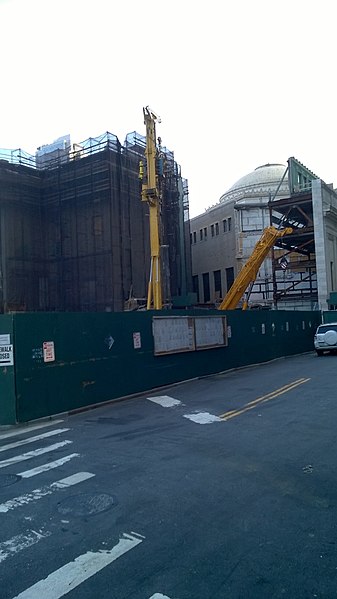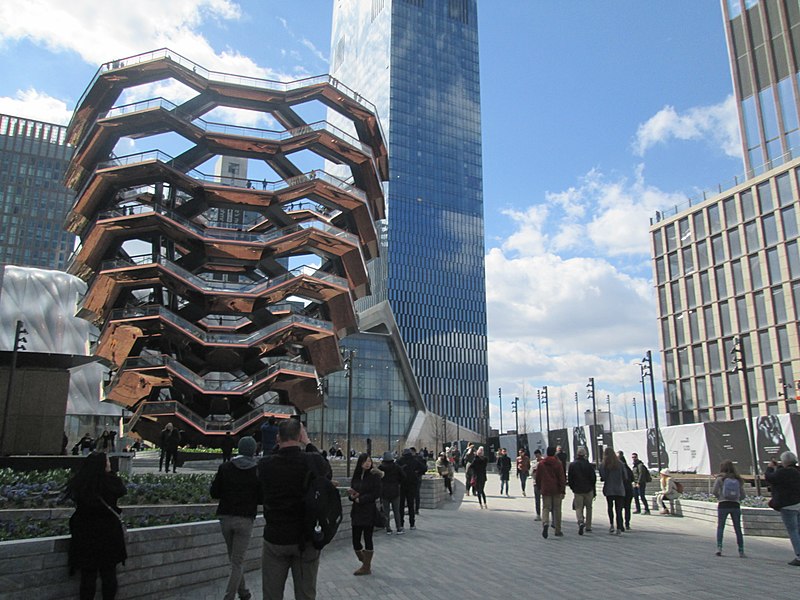BROWDERBOOKS
For the first review of The Eye That Never Sleeps, go here and scroll down. A five-star review by jetangen.
Countdown: As of 7:30 a.m. today, 4 days, 1 hour, 30 minutes until the release of The Eye That Never Sleeps, at which point all pre-ordered books will be shipped. (Assuming the publisher starts shipping at 9 a.m. Eastern Standard Time. But he may have started already.) And the giveaway of 100 e-books continues: when I last checked, 198 people had signed up. It ends May 8.

A story of the strangest friendship that ever was: a dapper young bank thief and the detective hired by the banks to apprehend him. For more about this and my other books, go here.
Fascinating New Yorkers has been reviewed by The US Review of Books. Reviewer Gabriella Tutino says, "There's something for everyone here in this collection of profiles, and it serves as a source of inspiration for readers who love NYC." For the whole review, click on US Review.
THE PALATIAL BANKS OF YORE
The Sunday Times Real Estate section is rarely visited by me, for what do I know or care about real estate? But the Real Estate section of the Times of April 21, 2019, caught my eye, for there on the front page was a big picture of the corner of West 14th Street and Eighth Avenue, where I tread almost daily. Featured in the photo were two landmarked corner buildings: on the southwest corner, the new Museum of Illusions, and across the street on the northwest corner, a CVS pharmacy. Both buildings are in the classical style, their columned façades vaguely reminiscent of the Parthenon, a style not particularly appropriate for a modern museum or a CVS. As one might guess, they were once banks – the New York County National Savings Bank and the New York Savings Bank. That was back when banking was a boring business, prudent and sedate, that preferred Greek-temple-like façades that oozed dignity and respect. Ah, those good old days!
So why are these buildings on the front page of the Real Estate section? Because, in their modest way, they show how the bank buildings of yore are being put to new uses. “Vaulting Ambition” says the article’s caption. “New developments citywide are repurposing opulent bank spaces where New Yorkers once deposited their savings.” But these two corner structures give hardly a hint of the grandiose buildings elsewhere being transformed.
More to the point is the palatial Dime Savings Bank in downtown Brooklyn. A wedge-shaped building built in 1906-1908 at the intersection of DeKalb Avenue and Fleet Street, it has a narrow but impressive classical façade with four tall columns topped by a sculpted pediment. Its sides are adorned with long rows of columns, and topping the whole structure is a soaring dome. Seeing photos of it for the first time, I marveled at its monumental grandeur, reminiscent of the old Pennsylvania Station in Manhattan that tragically succumbed to the wrecking ball. They don’t build buildings like the Dime today, classical monuments of dazzling majesty, their vast ornamental spaces ill adapted to the needs of today.
 |
| The Dime before renovations. Daderot |
And that is just the exterior. Online photos in color reveal the breathtaking beauty of the interior: a high ceiling decorated with ornate hexagons, from which hang chandeliers; a rotunda of twelve Corinthian columns of Greek marble inlaid with silver dimes and topped by a dome; marble benches; and inscribed in marble,
HE IS RICH
ENOUGH WHO
OWES NOTHING
And in the center of the rotunda is a large copper clock that visitors used to flock around.
 |
| The rotunda. Glenda Altarejos |
 |
| The copper clock. Steven Bornholtz |
When first setting foot in such an atmosphere, customers must have felt awed, humbled, and overwhelmed, though with time they surely adjusted to grandeur and learned to do their banking unmindful of the splendor around them. Just as hurrying travelers, myself among them, ignored the soaring majesty of the old Penn Station in Manhattan, as they rushed to catch their train.
To create a home of such magnificence, the Dime Savings Bank of Brooklyn must have evolved from its humble beginnings in 1859, when it announced that one could open a savings account with a dime. As the city of Brooklyn grew and flourished, so did the bank. By 1884 it had over 40,000 customers depositing more than $12 million. Which explains why, in the next century, it could expand into the vast, dazzling, and totally impractical magnificence of its final home.
So what brought it to its lowly status today? By 2016, ATMs and digital banking had done this palace in, and since then its landmarked Beaux-Arts interior has sat idle. Meanwhile its new owner, Chase, moved into a lowly storefront across the street, a tenth the size of the abandoned Dime, and sold the building to a developer. Today, palatial and grandiose are out; practical and dinky are in.
So it would seem, but not quite, for the spacious and imposing Dime is being reborn as part of 9 DeKalb, Brooklyn’s tallest skyscraper, a 1,066-foot, 73-floor luxury apartment building now under construction with retail at its base. The bank's splendid Beaux-Arts interior will become a flagship store topped by a roof with an outdoor lounge plus swimming pool wrapped around an ornate dome. The bank’s marble and pink granite façade will be joined on one side in unholy matrimony to a skinny glass-and-steel tower housing 425 rentals and 150 condo apartments. A Manhattanite, I have never laid eyes on the Dime, but a photo shows a skinny penile erection jabbing into the stratosphere, dwarfing a domed structure huddled at its base. Once grand and imposing, as a part of 9 DeKalb the Dime now looks puny and squat.
 |
| The beginning of construction, but as yet no tower. Griss.Jr |
And what is behind these conversions? The bank's being ornate, seemingly so passé, so nineteenth-century, doesn’t hurt. As one developer observes, if you’re seen as a big, bad developer barging into a gentrifying neighborhood, monumental architecture can appeal to the richies moving in. Being close to a subway station or two also helps. And then there’s the matter of air rights. These old banks were built before changes in zone allowed for greater height and density. So right there above a bank is a lot of empty air just begging to be used. By buying the unused air rights above a bank, and the lot adjacent to it, a developer can build bigger or taller or both on the adjacent lot. So once again, in this age of sprouting high-rises, the sky’s the limit.
Other such developments are transforming the old banking palaces of Brooklyn, but Manhattan is not exempt. Metro Life, a development company that has completed 14 conversions, is doing another one at 20 Broad Street. “Wait a minute,” says the history buff in me, “isn’t 20 Broad Street the address of the New York Stock Exchange?” Indeed it is, but also the address of a 29-story tower housing the Exchange’s offices that is right smack next to the Greek-temple-like façade of the Stock Exchange itself. (American money seems to have had an unnatural affinity for Greek temples.) But surely the Stock Exchange, that Beaux-Arts Parthenon dedicated to the worship of money, isn’t up for grabs? That building, and all it stands for, is to America what Notre Dame de Paris is to la belle France. But that tower no longer serves the Exchange. Last September it opened in its new persona as a residential tower with 533 luxury apartments starting at $2,685 a month. And below street level are two vaults once used to store stocks and bonds; one will now hold electrical equipment, and the other will become a lounge for residents.
So it goes. In banking, grand and magnificent have yielded to plain and practical. But the remnants of grand and magnificent have a new life joined to the spiky shafts of modernity, and the de luxe amenities offered to the rich.
Coming soon: Maybe something about agents and me. Maybe something about the Museum of Illusions, Filipino martial arts, Soapology, and Rolfing.
© 2019 Clifford Browder
Coming soon: Maybe something about agents and me. Maybe something about the Museum of Illusions, Filipino martial arts, Soapology, and Rolfing.
© 2019 Clifford Browder














